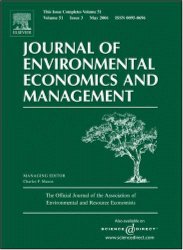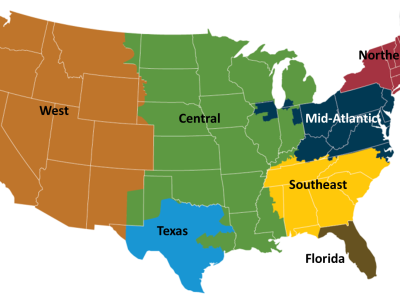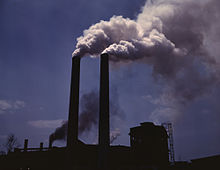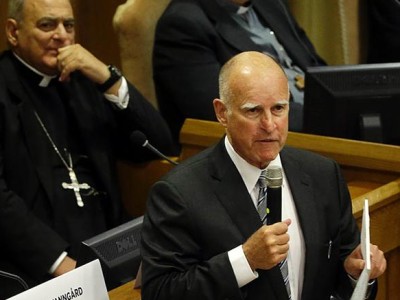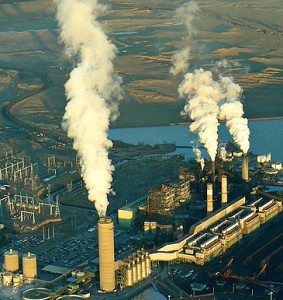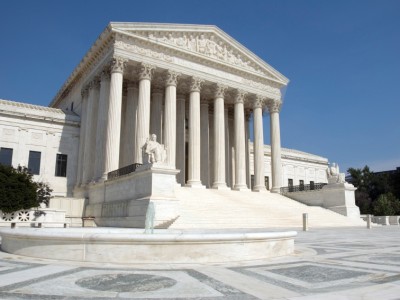Pollution & Health
The Coal Export Wars Reach Oakland
In seeking an alternative route to Asian markets, coal’s path from Utah to China via Oakland hits a snag
Expanded west coast infrastructure to support the export of western U.S. coal to Asian markets has long been part of the business plans for some of the nation’s largest coal producers. However, attempts by Powder River Basin coal interests to construct or expand coal export terminals in Washington and Oregon in recent years have been …
Continue reading “The Coal Export Wars Reach Oakland”
CONTINUE READINGWhat’s New in Environmental Economics?
Some interesting recent publications.
It sometimes takes awhile for journals to reach my desk as they circulate among faculty, so this isn’t hot off the presses. But I’ve been looking at some recent issues of JEEM (the Journal of Environmental Economics and Management), and I found a number of very interesting articles. Fully grasping the articles would require a …
Continue reading “What’s New in Environmental Economics?”
CONTINUE READINGGuess Who Benefits From Regulating Power Plants
The answer will surprise you.
What parts of the country benefit most from the series of new EPA rules addressing pollution from coal-fired power plants? The answer is not what you think. EPA does a thorough cost-benefit analysis of its regulations but the costs and benefits are aggregated at the national level. In a new paper, David Spence and David Adelman from the University …
Continue reading “Guess Who Benefits From Regulating Power Plants”
CONTINUE READINGWhat the Market Is Telling Us About Coal
Dump your coal stocks while you still can!
The market’s message is simple: coal’s day is ending. Three major coal companies (Alpha Natural Resources, Walter Energy, and Patriot Coal) have gone into bankruptcy. The two largest publicly traded companies (Peabody and Arch) are now trading for a dollar a share, down from $16 and $33 within the past year. They, too, may well …
Continue reading “What the Market Is Telling Us About Coal”
CONTINUE READINGCalifornia Governor Jerry Brown: Environmental Saint or Sinner?
Brown’s National & International Environmental Reputation Disputed by Some California Environmentalists
California Governor Jerry Brown has had a most eventful 2015, especially when it comes to environmental policy. He started the year fresh from an overwhelming election victory last November, earning him an unprecedented fourth term as California’s chief executive. Brown began 2015 by declaring a state drought emergency and becoming California’s “educator-in-chief,” repeatedly warning state …
Continue reading “California Governor Jerry Brown: Environmental Saint or Sinner?”
CONTINUE READINGMichigan v. EPA: Policymaking in the Guise of Statutory Interpretation
In Michigan v. EPA, the majority followed its own policy views, not those in the statute.
The majority opinion by Justice Scalia has gotten most of the attention. Most notably, he wrote that “[o]ne would not say that it is even rational, never mind “appropriate”, to impose billions of dollars in economic costs for a few dollars in health or environmental benefits.” Indeed, “[n]o regulation is ‘appropriate’ if it does significantly …
Continue reading “Michigan v. EPA: Policymaking in the Guise of Statutory Interpretation”
CONTINUE READINGInterpreting Michigan v. EPA
The opinion seems likely to have very limited repercussions.
In bringing the mercury rule to the Supreme Court, industry was hoping for a ruling that EPA had to balance costs and benefits (and could only include benefits relating to mercury). What they got was far less than that. Here, I’d like to address some key questions about the opinion. 1. When does EPA have …
Continue reading “Interpreting Michigan v. EPA”
CONTINUE READINGMercury Rising: The Court Reverses EPA’s Regulation
This was not a great decision for EPA, but it could have been much worse.
The Court has just now decided the Michigan case, involving EPA’s mercury regulation. As Ann Carlson explained in an earlier post, a lot was at stake in the case. The Court ruled 5-4 against EPA. This passage seems to be key to the Court’s reasoning: One would not say that it is even rational, never mind …
Continue reading “Mercury Rising: The Court Reverses EPA’s Regulation”
CONTINUE READINGClean Air versus States Rights
A sleeper decision by the D.C. Circuit upholds federal air pollution authority.
The D.C. Circuit’s decision last week in Mississippi Commission on Environmental Quality v. EPA didn’t get a lot of attention, despite having a very significant constitutional ruling. Since the constitutional discussion doesn’t start until about page seventy, after many pages of scintillating discussion of matters like the reliability of private air pollution monitors and the …
Continue reading “Clean Air versus States Rights”
CONTINUE READINGLegal Responses to the Santa Barbara Refugio Oil Spill
Exploring potential penalties and damages
Last Tuesday, a 24-inch underground oil pipeline on the beautiful Santa Barbara County coastline burst for reasons as of yet unknown. Over the course of several hours, an estimated 101,000 gallons of crude oil spilled down a storm drain, on the shoreline, and into the Pacific Ocean. As of late last week, oil had spread …
Continue reading “Legal Responses to the Santa Barbara Refugio Oil Spill”
CONTINUE READING




